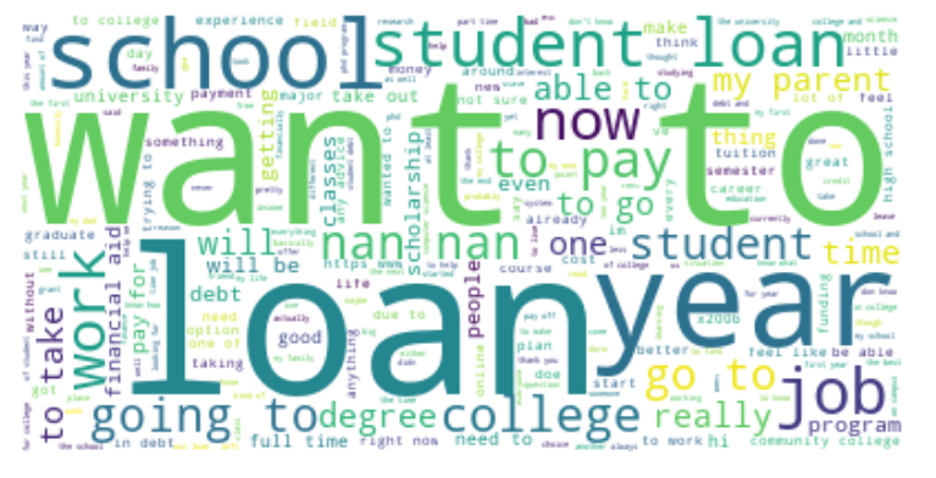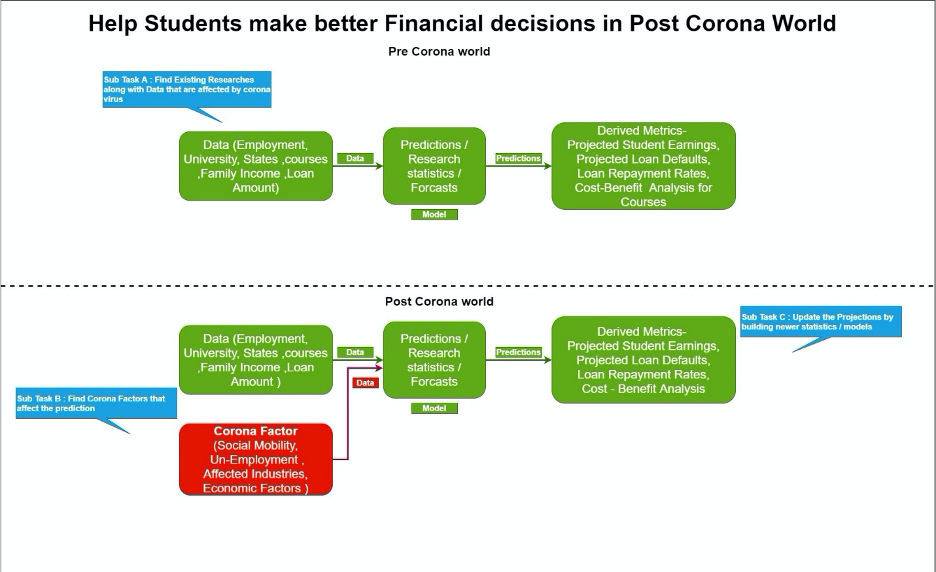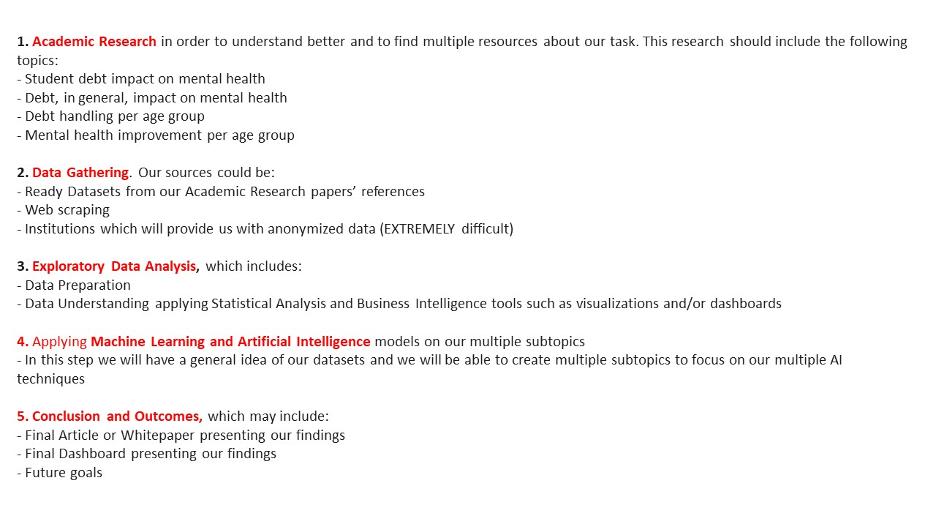Student Debt Crisis: Analysing Sentiments, Repayment, and Wellbeing of Students through AI | ShapingEDU
June 7, 2020

The “Applying AI to the Student Debt Crisis” project is entering week 5 and we are moving along at a fast pace. With just 3 more weeks to go in our eight-week project, some areas of focus are emerging.
It is impressive to see how much can be accomplished in a short period of time. I credit the progress to a fully engaged community and offer appreciation to the Omdena project Shepherds who keep everyone moving in a positive direction.
Each week, project update calls get more exciting as work is done and ideas exchanged.
Sentiment Analysis on social media sites, such as Twitter and Reddit, is leading to a deeper understanding of feelings about student debt. Mining news sites have shown sentiment about policies relating to student loans and student loan debt which I hope to hear more in this week’s update.

Figure 1: Initial Word Cloud of Sentiment about Student Debt
Several groups are looking at loan repayment data. One group is exploring demographic data to predict repayment capabilities so students can better understand loans and repayment obligations. Another group is gathering income levels and spending habit data of demographic groups in the United States so they can create a regression model to estimate, without bias, a comfortable percentage of income needed for college in times of student debt crisis.
As the participation in higher education of women, minorities and first-generation college students increases, it appears these groups are
- Less likely to get well-paid jobs;
- More prone to other debt, and
- Have higher levels of stress and which impacts their wellbeing.
Recent job losses due to COVID-19 have affected these groups disproportionally. The impacts of the Coronavirus on the debt crisis can be seen in both sentiment analysis and the ability to repay loans. A group looking at this more closely will be able to share information that could be relevant for students considering loans after COVID-19 ends.

Figure 2: Will COVID-19 impact borrowers
Student loan debt is stressful even when there aren’t additional factors, such as a pandemic, adding to it. Through an exploratory data analysis of academic research, one group is assessing if student loan/debt crisis has a statistically significant impact on mental health.

I have been working with team members to decide how to best surface the results of this project when it ends. If you have any suggestions, please share them with me. There will be informational outcomes to educate students about saving for college, educational materials about the implications of loans, and repayment informed by demographical insights. Hopefully, specific policy recommendations based on real data will be available as well.
This project is hosted by Arizona State University ShapingEDU. ShapingEDU is a community of dreamers, doers, and drivers shaping the future of learning in the digital age.
This article is written by Nancy Rubin, Arizona State University ShapingEDU Innovator in Residence.




